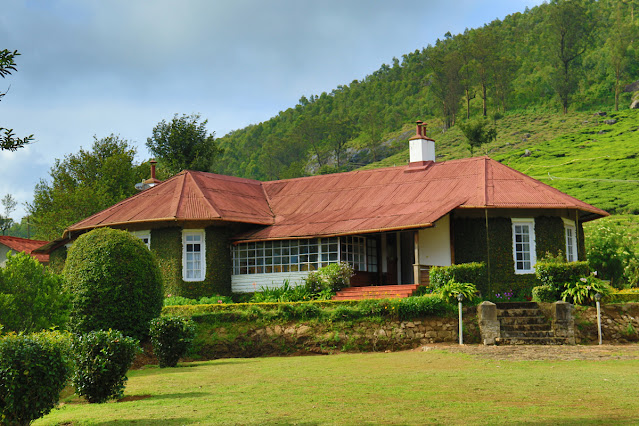Bungalow is a Hindustani word. Meaning "from Bengal," it recalls the region in the Indian subcontinent, where this type of building was common.
During the British rule, Europeans living in the interior of India, used to reside in such one-story houses which, generally, were surrounded by a veranda. On their return home, they introduced the bungalow there, and by retaining its indigenous name, acknowledged its original site.
During the British rule, Europeans living in the interior of India, used to reside in such one-story houses which, generally, were surrounded by a veranda. On their return home, they introduced the bungalow there, and by retaining its indigenous name, acknowledged its original site.
 |
| The Manale Tea Bungalow, one of the oldest bungalows in Kerala, India. Gnan.prabhakar |
Britain’s first bungalow, a single-storey prefabricated home, was completed in 1869 and occupied in Westgate-On Sea, Kent.
The American version of the bungalow appeared around the turn of the 20th century, first built in southern California. It was the dominant architectural style in the United States between 1905 and 1930.
Bungalows became popular in part due to companies like Sears offering pre-fabricated kits that could be ordered from catalogs.
The Chicago bungalow, popular between 1910 and 1940, is unique in that its gables are parallel to the street rather than perpendicular.
The bungalow was the first architectural trend in the U.S. to spread from west to east, contrary to most architectural styles.
In Australia, the Federation Bungalow style became popular from 1891 onwards, followed by the California bungalow style from 1908 to the 1930s.
Bungalows are found all over the world, including the USA, Australia, and parts of the former British Empire like Malaysia, Thailand, and the Caribbean.
In the UK, bungalows make up only about 2% of the existing housing stock. In 2009, just 300 bungalows were built in the country.
No comments:
Post a Comment